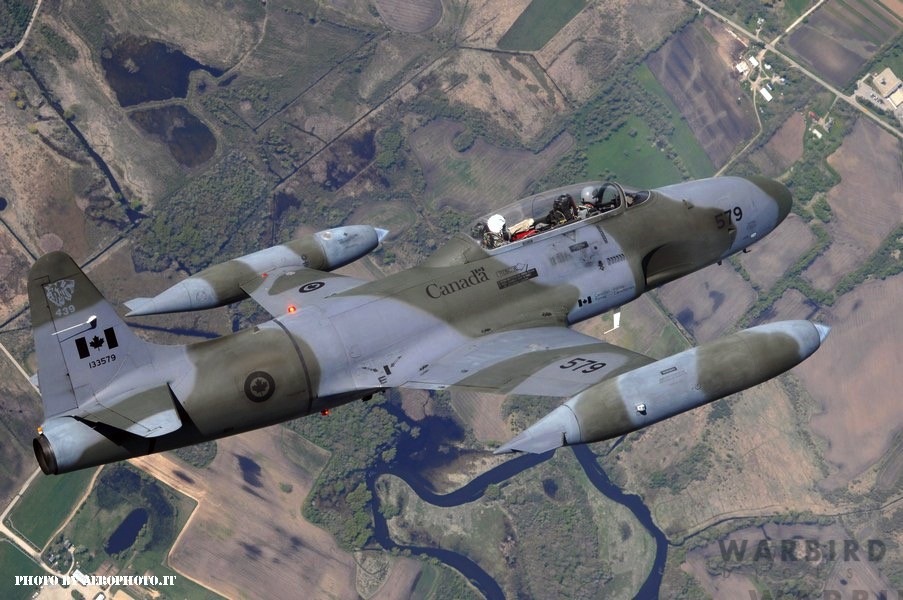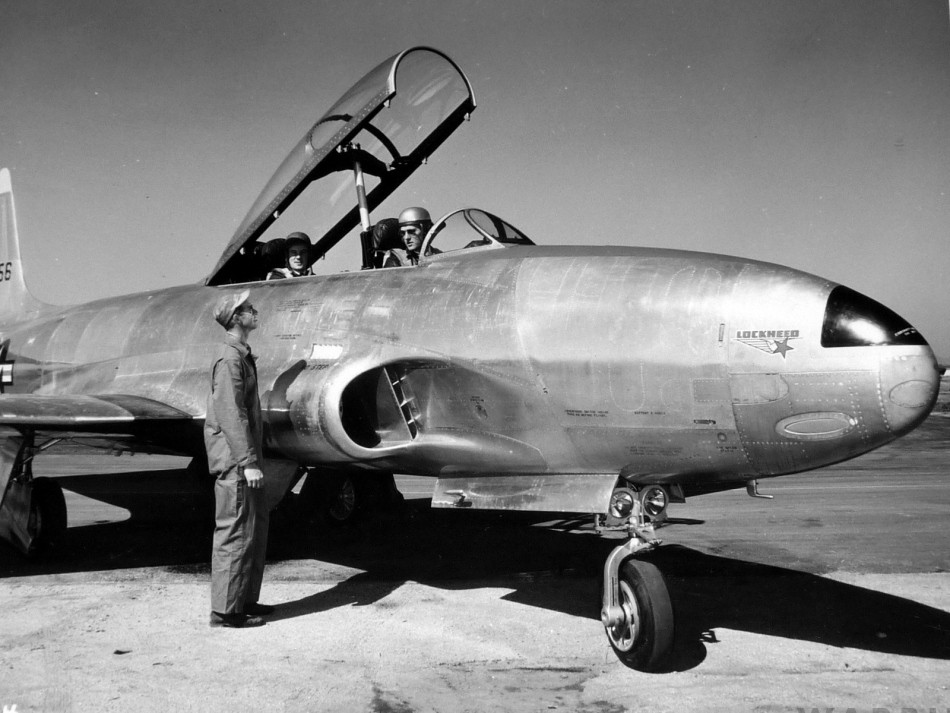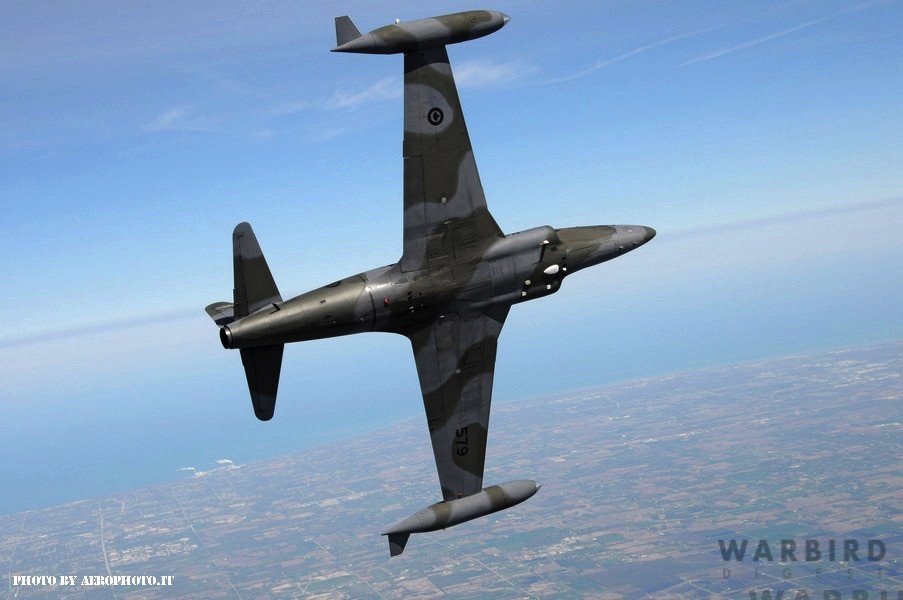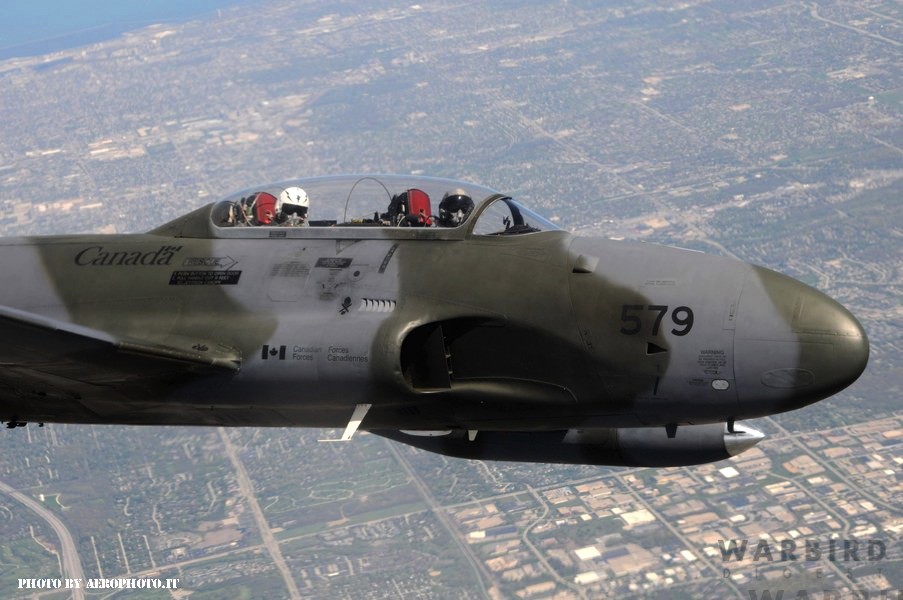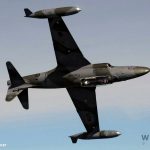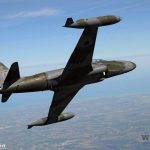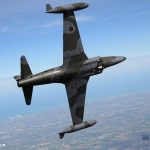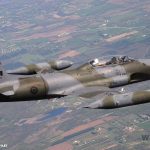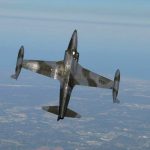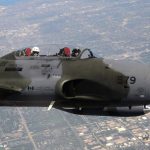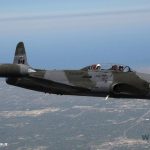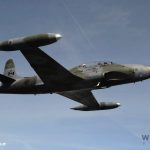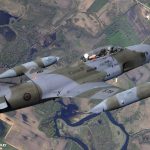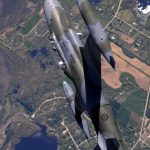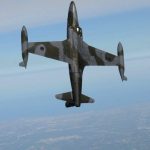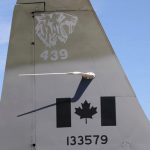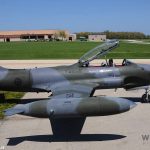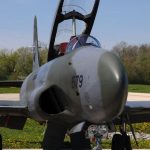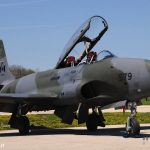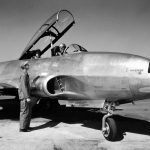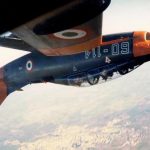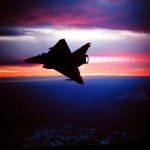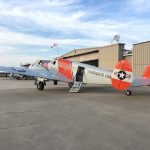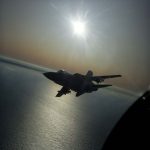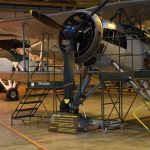Text by Stephen Chapis
Photo Luigino Caliaro
Though the Lockheed T-33 is viewed as a jet trainer of the Cold War, the type traces its origins back to the early years of World War II when Clarence “Kelly” Johnson and his Skunk Works team designed, built, and flew the P-80 in just 143 days. Originally designated TF-80C, the T-33 Shooting Star (a name it shared with the P-80) made its first flight on March 22, 1948 with Lockheed test pilot Tony LeVier at the controls. In a production run that ran from 1948 through 1959, the Shooting Star served as the basis for the TV-2 SeaStar, F-94 Starfire, and license-built Canadair CT-133 Silver Star. The “T-Bird” seen here, owned and flown by Paul Keppeler, Maj., USAF (Ret), is one of the latter.
In 1976, the RCAF ceased using the T-33 as a pilot trainer, but the T-Bird’s service was still far in the future. The jets were repurposed for target towing targets, adversary aircraft and electronic warfare platform in support of Canadian and NATO exercises. In addition, due to a radar signature that closely approximates anti-ship cruise missiles, Silver Stars were used extensively as a simulated missile target in naval exercises. Keppeler’s jet, registered today as NX433RD, was built by Canadair in 1952 and taken on strength with the Royal Canadian Air Force (RCAF), as 21579, on March 21, 1957, although it was renumbered 133579 in 1970. During its career, it served with VU-32, No. 414 Squadron (Sqn), No. 434 Sqn, No. 439 Sqn and returned to No. 434 Sqn at Canadian Forces Base (CFB) Greenwood, Nova Scotia where it remained until its retirement in 2002. In their final years RCAF T-Birds were painted in an overall gray paint scheme, but in 2001, ‘579 was re-painted in the two-tone wraparound scheme that European-based Silver Stars wore from the late 1980s to the early 1990s.
Keppeler relayed how he came to own this Cold War trainer, “I bought the T-33 in a sealed bid auction from the Canadian government’s Crown Asset Disposal Ministry in June of 2002 and ferried it to the U.S. in December after obtaining several permits from an alphabet soup of government agencies on both sides of the border. When I purchased the aircraft, it was in excellent condition and the only changes made in its civilian transition were the disarming of the ejection seats and the installation of a civilian transponder. Once we got it home, we performed a very thorough civilian maintenance inspection and found no significant deficiencies or problems and no repairs or restoration work was required. It was reassembled and I just started flying it. As for the color scheme? I decided to keep it with its original NATO wrap-around camouflage paint scheme it wore in one of its actual postings, that of the famous RCAF 439 Squadron, a unit with a distinguished history, that flew Starfighters and CF-18 Hornets based in Germany.”
Keppeler, who flew C-130s in the Air Force and now flies the Boeing 777 for a major U.S. airline, bases his CT-133 from Waukesha County Airport, near Milwaukee, Wisconsin. and flies regularly. Paul is a former USAF C-130 pilot currently flies Boeing 777s for a major US airline. Since he acquired the jet he’s flown at airshows at Oshkosh and Manitowoc in Wisconsin, Waukegan, Illinois, and it in its home country in Hamilton, Ontario.
Keppeler said of the Silver Star, “I’m thrilled and proud to fly this iconic aircraft. One quirky shortcoming is its center of gravity (CG), which is more aft than many jets due to the design and engine location making it tail-heavy. Consequently, if a T-33 pilot would do a vertical climb and tail slide, depart controlled flight or mismanage a spin recovery, it will likely not recover nose down, but instead a nose-over-tail tumble can occur. While the maneuver can be alarming, but if there is sufficient altitude a pilot can recover by simply neutralizing the flight controls and waiting for it to start flying nose-down again, which it will do every time. However, if elevator trim was left way nose up (13 degrees or greater), this will cause the aircraft to pitch up abruptly during the high speed recovery and stall, spin or tumble again. Altitude required for recovery is a minimum of 10,000-12,000 feet and intentional tumbles should not be initiated below 20,000 feet.Aside from the tumbling tendency, the airplane flies honestly and smoothly throughout all flight regimes. The ailerons are hydraulically boosted, very sensitive and take some getting used to for new T-33 pilots who can be seen doing the “wing waggle” during their first takeoffs. It is a large, heavy, fast trainer compared to basic/primary trainers like the T-37 which feels more like a maneuverable go-kart or MG sports car. When you fly the T-33 you can definitely see and feel its fighter origins with its stout construction, tight turning capability and rapid roll rate. With over 40 flying around the world, including the Bolivian Air Force, T-33s will be in the skies for years to come.”
With nearly half of those 40 jets flying within the United States, the T-Birds, though costly to operate, are popular due to their prominent history, excellent flying characteristics, reliability, and abundance of spare parts. Thanks to its retirement in the early 21st century, Keppeler’s CT-133 is one of the most original jets flying today and looks splendid in its 1980s retro paint scheme as can be seen in the accompanying photos.
A special thanks to Luigino Caliaro for helping with the drafting of the article and the photos. F0r more information about Luigino’s work visit www.aerophoto.it







